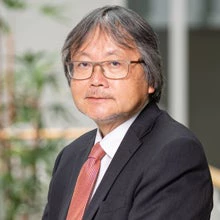 Leveraging concessional finance to multiply impact and reduce fragmentation adds up to a better deal for developing countries. Photo: Jonathan Ernst/World Bank
Leveraging concessional finance to multiply impact and reduce fragmentation adds up to a better deal for developing countries. Photo: Jonathan Ernst/World Bank
Concessional finance—that is, grants and low-interest loans—is more important than ever for the world’s poorest countries. Yet today’s aid architecture is highly complex, fragmented, and offers limited concessionality. In this context, it’s important to find ways to leverage the available resources for the biggest, most effective impact.
The International Development Association (IDA) is the world’s largest source of concessional finance for developing countries. About 30% of its outflows are provided in the form of grants, with the balance in very low-interest loans. IDA is a critical part of the World Bank’s vision to create a world free of poverty on a livable planet. IDA’s concessional financing helps countries boost economic growth to create jobs and prosperity, overcome shocks and emergencies, and engage in effective climate action.
Earlier this month, I participated in a roundtable discussion on concessional finance at the Paris Peace Forum. It addressed four broad questions: the importance of leveraging in concessional finance, how concessional funds can be allocated for maximum impact, differentiating concessionality between sectors, and the complexity of the current aid architecture.
In the context of massive development needs and limited resources, it is only sensible to leverage concessional funds where possible. IDA’s hybrid model, in place since 2017, allows it to multiply concessional resources, such that $1 given to IDA results in nearly $4 of financing for poor countries. However, despite the financial efficiency of leveraging scarce resources, the share of overseas development assistance going into unleveraged facilities—which take $1 from donors and use that to give $1 to recipient countries—within total official financial flows has been growing. Donors should therefore consider whether they have an appropriate balance of leveraged and non-leveraged funding in place.
It also seems clear that concessional resources should be allocated where the need is greatest and where their use is most effective . IDA does this in a transparent manner by balancing a country’s needs with its performance—such as ratings of its policies and institutions. Needs are measured by population size and per capita gross national income, and factored into financing allocations.
For more than a decade, IDA has allocated grants on the basis of risk of debt distress rather than by sector. When IDA grants were first introduced in 2002 as part of IDA13, they were allocated to certain sectors, but that did not work well. IDA’s current approach is well targeted today given the worsening of the risk of debt distress over the past several years. Yet the proportion of concessional financing in official financing flows to countries at high risk of distress has been declining in recent years.
IDA supports efforts to reduce the current fragmentation and complexity of concessional financing . We have been studying recent trends in the global aid architecture, mostly using data from the Organization for Economic Co-operation and Development. Our research shows that the global aid architecture is characterized by growing fragmentation, with official financial flows increasingly split into smaller portions; a proliferation of donor channels, in which some countries must deal with more than 200 donor agencies; a growing share of facilities that provide zero leveraging; and high levels of circumvention, with only 40% of official financing flows going through the recipients’ national budgets.
Given the high stakes for our planet, concessional finance needs to be expanded and made more efficient . We can do so by multiplying the value of every dollar, rather than dividing our efforts across a proliferation of channels—and targeting our collaborative efforts among partners for transparent, maximum impact.
Next month, IDA will meet in Zanzibar to conduct a mid-term review of its current replenishment cycle, IDA20, which provides $93 billion to support poor countries. The scale of the global crisis before us demands that we raise our ambition for IDA21. As consultations for the next replenishment begin in the months ahead, the development community should keep its eye on maximizing the impact and efficiency of every dollar raised for the world’s poorest countries.


Join the Conversation